California boat license requirements

Who needs a California Boater Card?
As of January 1, 2025, everyone who wishes to operate a motorized vessel on California waterways needs a California Boater Card.
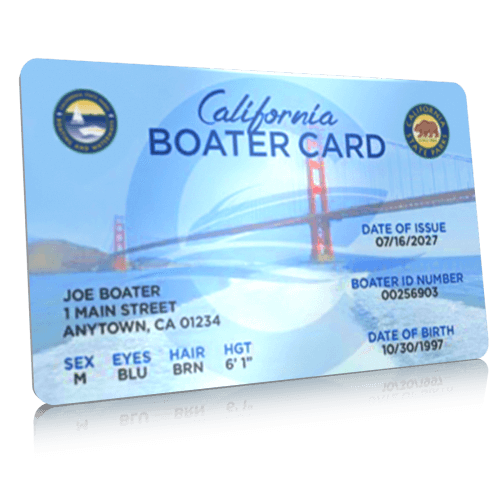
California Boat Registration
Do I need to register my boat in California?
If you own a boat over eight feet long or a boat/vessel with a motor (no matter the size), you must register it with DMV in order to legally operate it on California waterways.
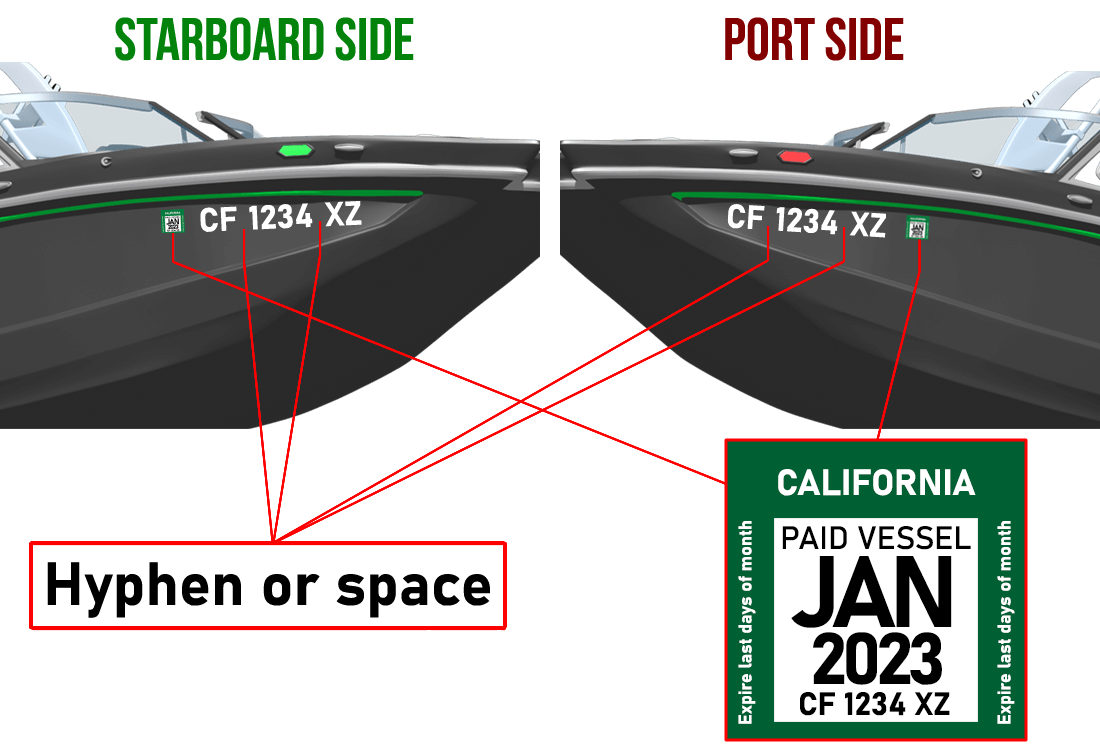
How do I know when to renew my boat registration in California?
You must renew your boat/vessel registration by December 31 of every odd-numbered year (for example, 2013, 2017, etc.), even if you do not use your boat/vessel.
To remind you that you need to renew your registration, DMV will mail you a renewal notice 60 days before your registration expires.
There are some boats/vessels that do not have to be registered in California:
-
Canoes, rowboats, or any boats/vessels that use paddles or oars
-
Sailboats shorter than eight feet long
-
Sailboards or parasails
-
A ship’s lifeboat
-
Seaplanes on the water
-
Boats that run on a track, such as amusement park rides
-
Floating structures that are tied to land and use power, water, and a sewage system on the shore.
Dinghies must be registered with DMV.
Houseboats that have a motor must be registered with DMV.
Commercial boats/vessels that weigh more than five net tons and are longer than 30 feet must be registered (documented) by the U.S. Coast Guard.
California Boat Registration numbers and stickers
California boat registration numbers & stickers placement
-
On the forward part of your vessel well above the waterline
-
On both sides of the bow
-
Numbers must be painted or applied as a decal, where law enforcement officials can read it.
-
Letters and numbers are BLOCK style of at least 3 inches in height and must contrast in color with the hull.
-
Letters and numbers are to read from left to right and have a space (CF 4252 AF) or hyphen (CF-3534-AF) to separate letters and numbers.
-
Registration decals show the expiry date and must be displayed within 3 inches of the registration number on each side of the watercraft, toward the stern and in line with the numbers.
-
You must display only current registration decals and remove any expired ones.
-
The decals are valid for 2 years.
How do I transfer ownership of a used boat in California?
You will need to follow these steps:
-
Obtain a Bill of Sale: The first step in transferring ownership of a boat is to obtain a Bill of Sale. This is a legal document that proves the transfer of ownership from one person to another. The Bill of Sale should include the name and address of the buyer and seller, the make and model of the boat, the hull identification number (HIN), and the purchase price.
-
Obtain a Transfer of Ownership Form: The California Department of Motor Vehicles (DMV) requires a Transfer of Ownership Form (Form REG 262) to be completed and signed by both the buyer and seller. You can download this form from the DMV website or pick up a copy from any DMV office.
-
Pay the Transfer Fee: The transfer fee for transferring ownership of a boat in California varies based on the value of the boat. You can check the current fees on the DMV website. The transfer fee must be paid at the time of transfer.
-
Submit the Documents: The completed Transfer of Ownership Form, Bill of Sale, and transfer fee must be submitted to the DMV within 5 days of the transfer of ownership. You can submit the documents in person at a DMV office or by mail.
- If you own a trailer for your boat/vessel, you need to register it separately.
California Boating License age Requirements
What is the youngest age you can drive a boat?
You must be at least 12 years of age to operate a motorboat greater than 25 horsepower.
Children under the age of 12 cannot operate a motorboat of more than 6 horsepower unless accompanied by a person at least 18 years of age.
Minimum age to operate a pwc is 14 unless accompanied by a person at least 18 years of age.
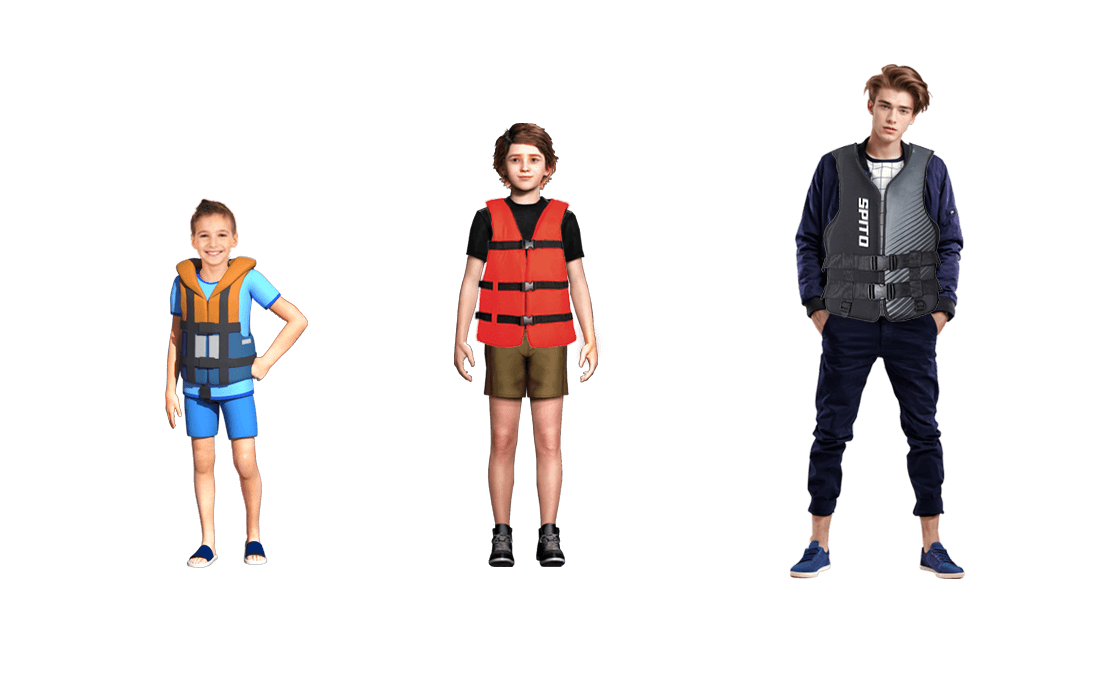
What is the minimum age required to operate a powerboat in California with supervision by a person 18 or older?
The law does allow anyone aged 12-15 to operate motorboats of more than 15 horsepower, or sailboats over 30 feet, if they supervised by a person on board who is at least 18 years of age.
What is the minimum age required to operate a powerboat in California?
A person over the age of 16 may operate all motorboats and personal watercrafts (PWC).
California PFD requirements
California boating law requires to wear a U.S. Coast Guard-Approved Life Jacket for:
The law does not apply in the following circumstances:
-
The operator of a sailboat on which every child under age 13 is restrained by a harness tethered to the sailboat;
-
The operator of a vessel on which every child under age 13 is in an enclosed cabin.
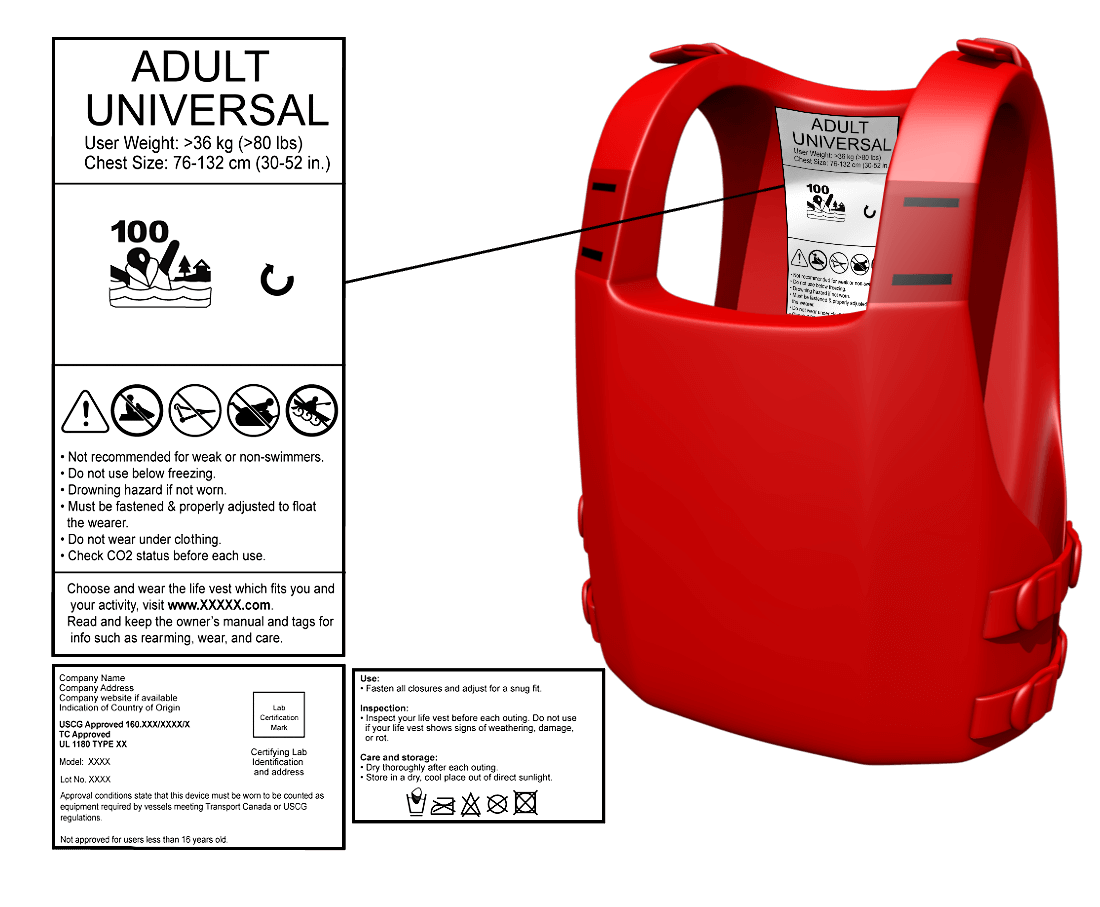
California Required Boat Safety Equipment - Regulations
California law requires that you have specific safety equipment on board depending on the class of your boat. Boat classes are determined by boat length:
Motorboats Less than 16 feet in length
Motorboats 16 to 26 feet in length
Motorboats 26 to 40 feet in length
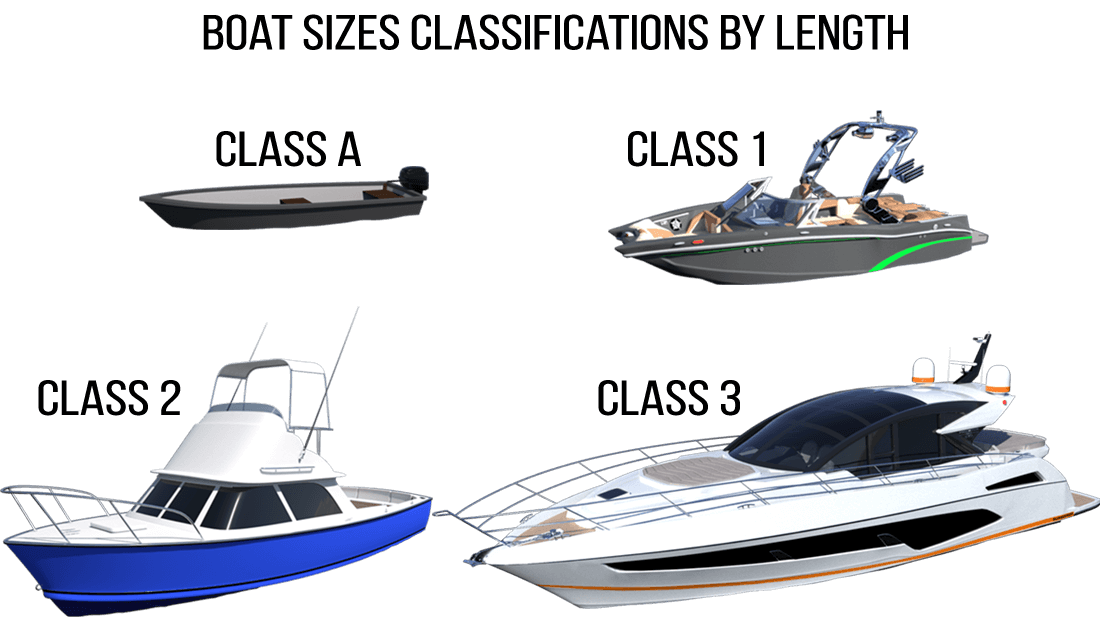
Operating under the influence of drugs and alcohol in California
Boaters operating in California are subject to its laws governing the use of drugs or alcohol. No one is allowed to drive a boat while under the influence of drugs or alcohol, and operating a power craft in this way is a criminal offense.
Operating any vessel, personal watercraft, water skis or similar recreational equipment while intoxicated is against the law. Alcohol and drugs impair judgment and coordination — two qualities essential for safe boating.
If a boater has a blood alcohol level of 0.08% or higher, he/she shall be considered to be under the influence of alcohol.
Anyone convicted of operating a vessel while under the influence of alcohol and/or drugs is liable to a fine of up to $1,000 and/or one year in the county jail.
Evidence of a level of at least 0.05%, but less than 0.08%, can be used by authorities, along with other evidence in order to determine if the person was operating a watercraft while intoxicated by alcohol.
When does an operator file an accident report in California?
- if the accident results in injury, death or disappearance
- when total damage to the boat and property is over $500.00
- when there is complete loss of the boat.
California Pumpout Station
“Pumpout Nav” is a free iOS and Android mobile app that shows you where the nearest sewage pumpout, dump station and floating restrooms are located. The app shows nearest pumpouts to your location on a map or list its status. How does it work? If all is well, a pumpout will appear as a green place marker and once you tap on the marker, the station will read “operational.”
The app was first developed by California State Parks Division of Boating and Waterways’ (DBW) Clean Vessel Act (CVA) Program in partnership with the San Francisco Estuary Partnership and The Bay Foundation (funded by the U.S. Fish and Wildlife Services, Sport Fish Restoration and Boating Trust Fund) for boaters in the San Francisco Bay/Delta and Southern California regions. It has been picked up by CVA programs in other states. Boaters in Oregon, Washington, Florida, Rhode Island, and along Lake Champlain in the New York/Vermont/Quebec region can now find the location of publicly accessible pumpouts in their areas as well. Other organizations have said they are excited to get on board.
To download the Free Pumpout Nav App simply go to your the Apple App Store or Google Play and look for Pumpout Nav App
View the lists of Northern California pumpout stations
View the lists of Southern California pumpout stations
View the lists of floating restrooms
Aquatic Invasive Species in California
Aquatic invasive species are non-indigenous species that threaten the diversity or abundance of native aquatic species. Two such ANS are the Zebra mussel and the Quagga mussel. States on behalf of water users spend tens of millions of dollars on attempting to control these prolific species every year.
Non-native aquatic species of plants, fish and animals are infesting the waters of California. These infestations can increase dramatically. Under the right conditions these nuisances can increase at an alarming rate and displace the native species, cause blockage of the waterways and have a negative impact on navigation and recreation.
They are next to impossible to eliminate once they are introduced. Boaters should be conscientious when pulling their boats from recreational waters. You should inspect the boat and trailer, before you leave the ramp area, and remove any suspected aquatic nuisance species and mud in order to eliminate their spread to other waters that may be visited. It is imperative to properly clean watercraft and equipment after each use.
Personal Watercraft (PWC) in California
-
Each person on a PWC or being towed by a PWC must wear a USCG approved life jacket specific for the activity.
-
The law requires anyone operating a PWC equipped with a lanyard cut-off switch to attach the lanyard to his or her person, clothing or life jacket. Operating a PWC equipped with a self-circling device is prohibited if the device has been altered.
-
To operate a PWC designed for one person, the operator must be 16 years of age or older. A person 12-15 years of age may operate a PWC designed to carry two or more persons if the operator is supervised on board by a person 18 years of age or older.
-
It is illegal to operate a PWC from sunset to sunrise.
-
You may not carry more passengers than the number for which the craft was designed to carry by the manufacturer. When towing someone on a tube or on water skis, the PWC must have the appropriate capacity to accommodate the operator, the observer, and the person being towed.
California Oil Disposal
It is forbidden to discharge untreated waste, oil or trash in California within three miles of shore. The penalty for illegal discharge can result in a fine of up to $10, 000.
All oil and chemical spills must be reported to the National Response Center
800-424-8802
State Line 800-645-7911
California No Discharge Zones
California’s No Discharge Areas are:
- El Dorado County: Lake Tahoe
- Los Angeles County: Avalon Bay Harbor
- Marin County: Richardson Bay
- Orange County: Dana Point Harbor; Huntington Harbor; Newport Bay (Upper and Lower); Sunset Bay
- Placer County: Lake Tahoe
- San Diego County: Mission Bay; Oceanside Harbor; San Diego Bay
- Ventura County: Channel Islands Harbor
Inspections for Quagga and Zebra Mussels in California
Non-native aquatic species of plants, fish and animals – such as Hydrilla, Egeria densa, Water Hyacinth, and quagga and zebra mussels - are threatening the waters of California. They are known as ‘’Aquatic Invasive Species’’ because under the right conditions, these nuisance species can increase at an alarming rate, displacing the native species, causing blockages of the waterways, and having a negative impact on navigation and recreation.
They are next to impossible to eliminate once they are introduced. It is imperative to properly clean watercraft and equipment after each use.
Carbon monoxide poisoning in California
It is possible for someone to suffer carbon monoxide poisoning while on board vessels that are poorly ventilated, houseboats, or boats where an overhead canopy is affixed. When the air moves around the boat and creates a low pressure area just behind the wide flat transom, carbon monoxide will accumulate there. The carbon monoxide emissions from the exhaust pipes will enter the low-pressure area and flow back into the cockpit and cabin.
Muffling device in California
While operating your powerboat on California inland and coastal waters up to one mile from shore, it must be equipped with a muffler. Otherwise, you must have a means to prevent it from exceeding the noise levels listed below when they are measured by the Stationary Sound Level Measurement.